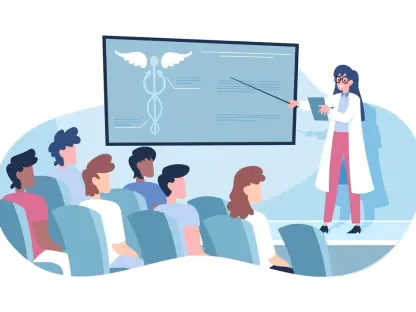What happens when a lifeline turns into a labyrinth of rules and restrictions for millions of Americans? As Medicaid, the critical healthcare safety net for over 70 million low-income individuals, faces a seismic shift with new work requirements set to roll out by 2027, the stakes have never been higher. Picture a single parent, juggling multiple jobs, now forced to prove hours of work or volunteering just to keep medical coverage for their family. This looming policy change, already sparking heated debate, could reshape access to healthcare for the most vulnerable, raising a pressing question: will it protect or punish those who need it most?
A Growing Threat to Low-Income Healthcare Access
The impending federal mandate on Medicaid work requirements threatens to create a crisis for millions who depend on the program for basic medical care. By 2027, recipients across the nation may need to document at least 80 hours a month of work, study, or volunteer activities to maintain eligibility. In states like Georgia, where a similar program is already in place, early signs point to chaos rather than clarity, with countless individuals struggling to meet these demands.
This isn’t merely a policy adjustment; it’s a potential turning point that could leave vast numbers without coverage. Experts predict that bureaucratic hurdles and systemic failures could disproportionately impact rural communities, people with disabilities, and those lacking reliable internet access. As the deadline approaches, the tension between safeguarding public resources and ensuring healthcare access grows sharper.
The significance of this issue cannot be overstated. With healthcare tied directly to survival for many, the risk of losing coverage due to a missed form or a glitchy system isn’t just an inconvenience—it’s a matter of life and death. This story demands attention as it unfolds, revealing whether these requirements will strengthen accountability or deepen despair.
The Controversy Surrounding Medicaid Work Rules
At the heart of this policy shift lies a fierce debate over the purpose and impact of imposing work conditions on Medicaid recipients. Supporters, including prominent Republican figures like House Speaker Mike Johnson, argue that such measures encourage self-reliance and prevent overuse of public funds. They view the program as temporary aid, not a long-term solution for able-bodied adults, pushing for rules to ensure it serves only those in dire need.
On the flip side, critics, including health advocates and policy analysts, contend that these requirements miss the mark entirely. Studies from institutions like Georgetown University reveal that most Medicaid enrollees aged 19-64 are already employed or unable to work due to health issues or caregiving duties. The fear is that instead of fostering independence, the policy will strip away vital support from those already battling poverty.
Georgia’s current experiment with work requirements offers a glimpse into the potential fallout. With only a fraction of eligible individuals successfully enrolled despite millions spent on implementation, the state’s struggles signal a rocky road ahead. This controversy isn’t just academic—it’s a real-world clash over how society values and supports its most vulnerable members.
Real Stories, Real Struggles Under Work Mandates
Behind the policy papers and political arguments are human lives grappling with the weight of these new rules. Take Tanisha Corporal, a seasoned social worker from Georgia, who endured an eight-month ordeal to secure Medicaid coverage for herself and her son. Despite her deep knowledge of the system, she faced endless denials and lost paperwork, an ordeal that left her exhausted and frustrated.
Then there’s Paul Mikell, a truck driver and electrician, who encountered relentless technical glitches while trying to navigate Georgia’s online portal for the Pathways to Coverage program. Without consistent internet access or nearby support, his attempts to comply with reporting rules often fell through, risking his eligibility. These personal battles highlight how even determined, eligible individuals can be derailed by an unforgiving system.
The broader data paints an equally grim picture. In Georgia, despite over $50 million invested in building the eligibility platform, a mere 7,500 people are enrolled, a tiny fraction of those who qualify. Stories like these, paired with stark numbers, suggest that scaling such a system nationwide by 2027 could lead to a public health disaster if barriers aren’t addressed.
Expert Warnings and Frontline Perspectives
Health advocates on the ground are sounding the alarm about the devastating potential of these work requirements. Laura Colbert of Georgians for a Healthy Future has been blunt in her assessment: “These rules don’t create jobs—they just strip away healthcare.” Her words resonate with many who see the policy as punitive rather than productive, targeting people already stretched thin.
Academic research backs up these concerns with hard evidence. Joan Alker from Georgetown University’s Center for Children and Families points out that the majority of Medicaid recipients are either working or exempt due to health or other barriers. Her findings challenge the notion that work requirements will spur employment, instead predicting widespread coverage loss due to administrative failures, much like Arkansas saw in its failed 2018 experiment.
Financial inefficiencies add another layer of doubt. Georgia’s $91 million expenditure for minimal enrollment raises serious questions about whether such programs are worth the cost. Together, these expert insights and firsthand accounts paint a troubling forecast, suggesting that without major reforms, millions could be left without care in just a few years.
Charting a Path Forward for Medicaid Policy
With the 2027 deadline for nationwide Medicaid work requirements approaching, solutions must be prioritized to prevent a healthcare catastrophe. First, states need to overhaul reporting systems, making them intuitive and accessible. Learning from Georgia’s tech woes, user-friendly portals, in-person support centers, and toll-free helplines could bridge gaps for those without digital resources.
Expanding exemptions offers another critical safeguard. Recognizing the realities of students, caregivers, and individuals with health limitations—already a small segment of recipients—can prevent unjust coverage losses. Additionally, launching more pilot programs with thorough evaluations before a full rollout could pinpoint weaknesses, avoiding repeats of past failures like Arkansas’s.
Community outreach and advocacy also hold immense potential. Nonprofits and local groups should intensify efforts to educate recipients on navigating these rules while pushing policymakers for balanced approaches. If acted upon, these steps could transform Medicaid from a bureaucratic burden back into a true safety net, ensuring that millions aren’t left behind as the deadline looms.
Reflecting on the Road Traveled
Looking back, the journey toward implementing Medicaid work requirements reveals a stark divide between intention and impact. Personal struggles, like those of Tanisha Corporal and Paul Mikell, expose the human cost of complex systems that often fail the very people they are meant to serve. Expert warnings and historical missteps, such as Arkansas’s troubled 2018 attempt, underscore the depth of the challenge faced.
As the nation moves closer to 2027, actionable reforms remain essential. Streamlining technology, broadening exemptions, and enhancing support networks stand out as vital steps to mitigate harm. Beyond this, fostering a dialogue that prioritizes accessibility over restriction could reshape how such policies evolve, ensuring that healthcare remains a right, not a privilege to be earned through endless red tape.









